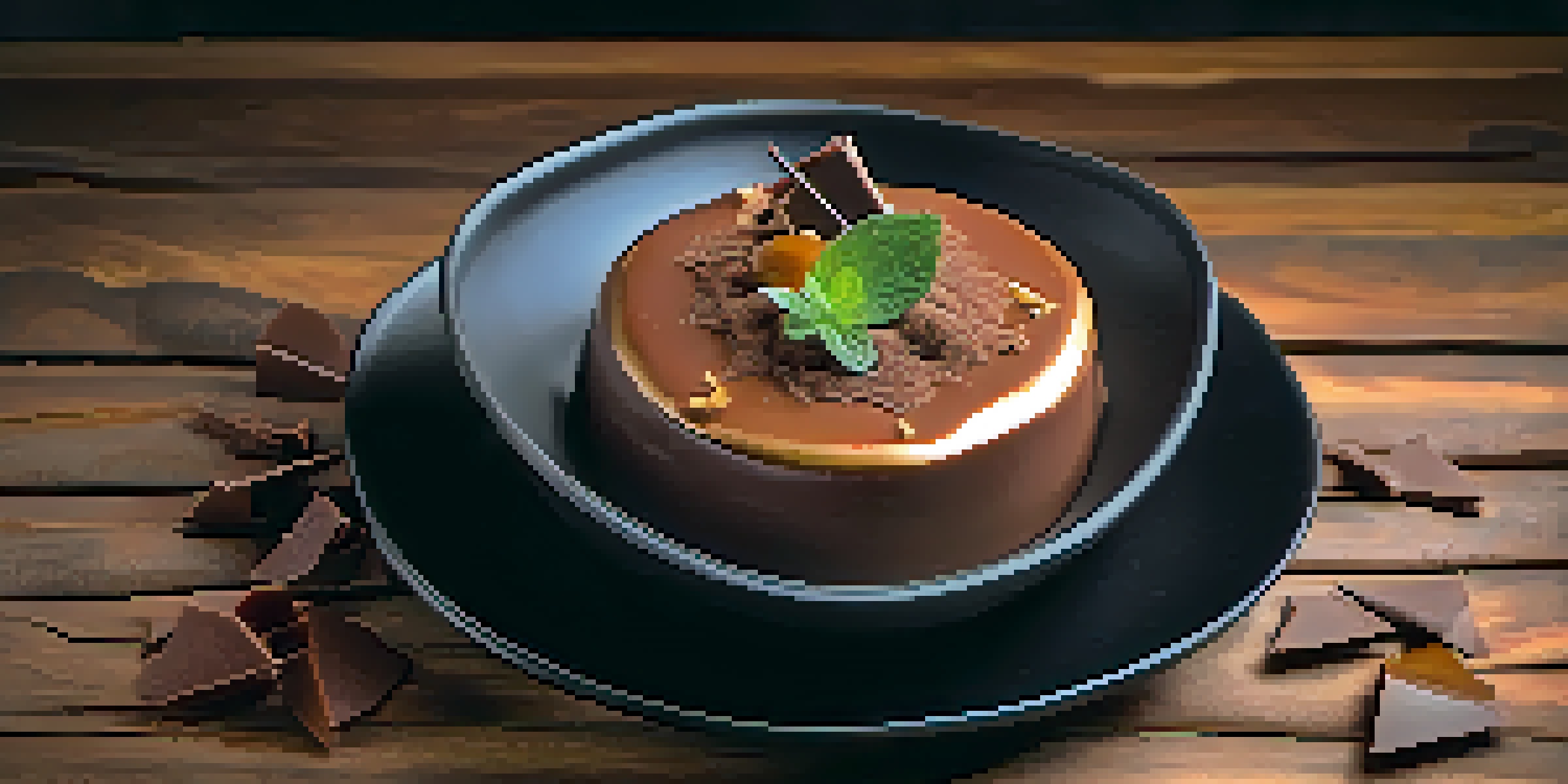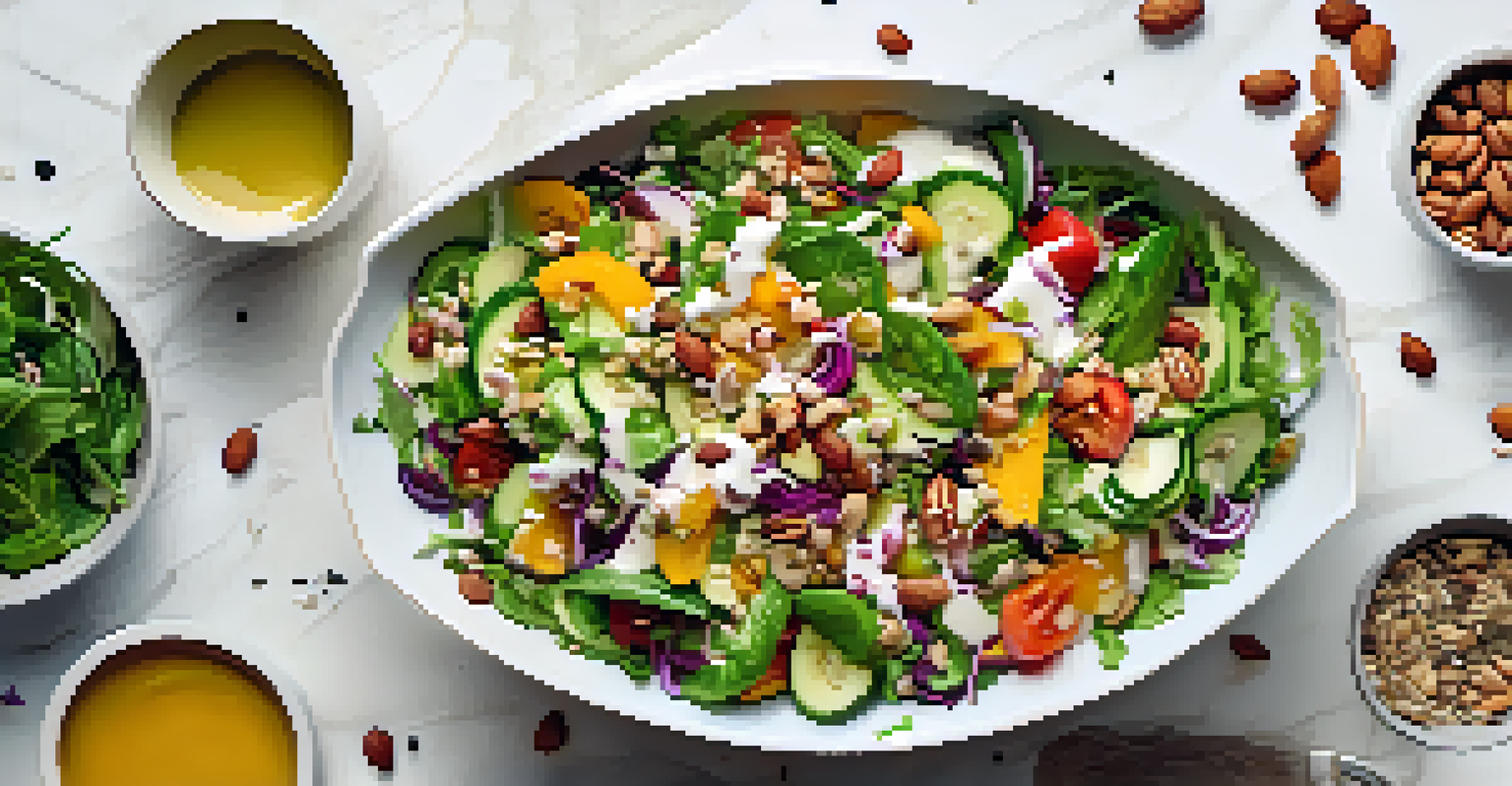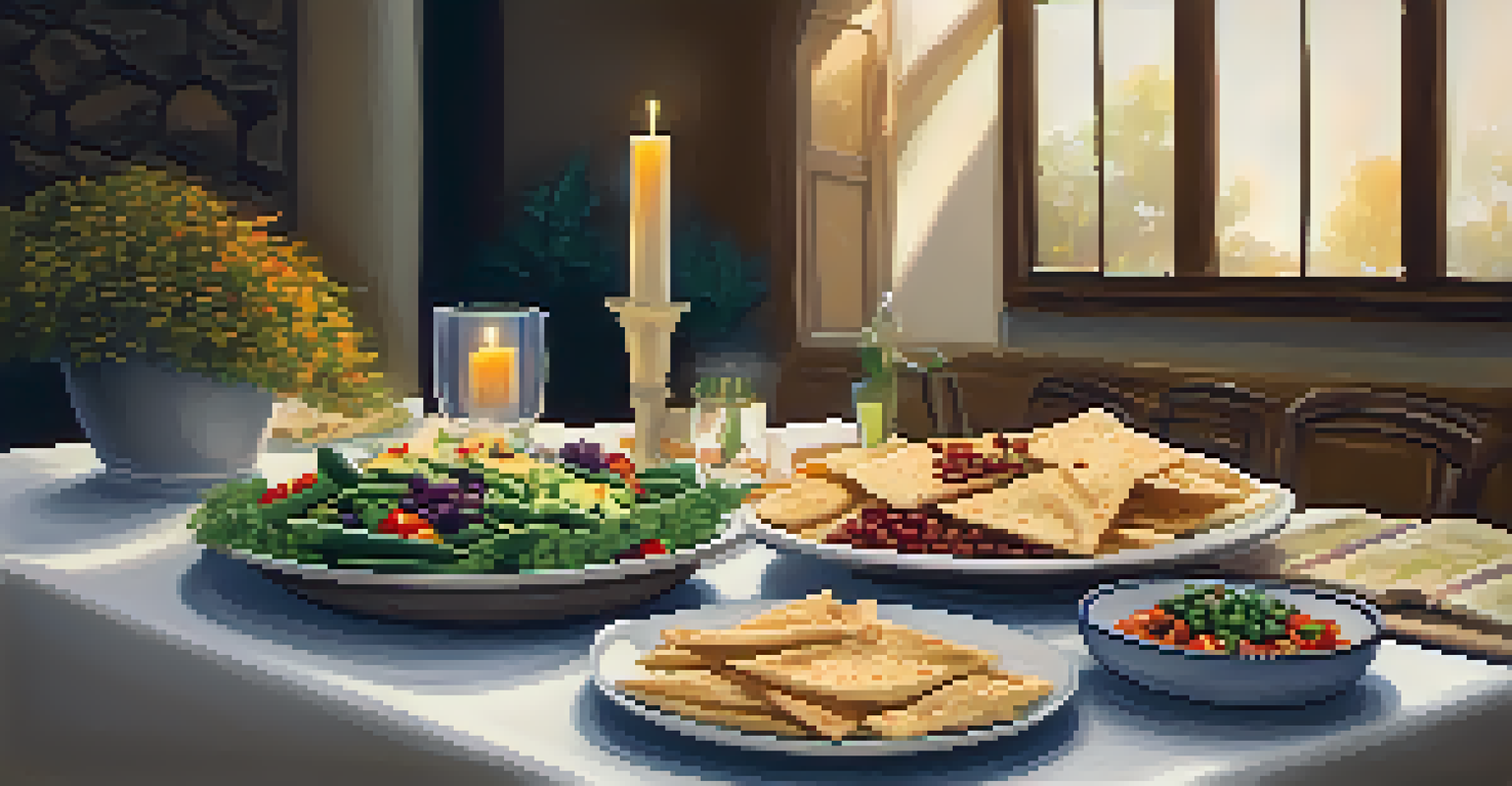Culinary Textures: Elevating Dishes with Diverse Mouthfeel

Understanding Culinary Textures and Their Importance
Culinary textures refer to the different physical sensations food creates in our mouths. They can range from creamy and crunchy to chewy and tender, playing a crucial role in how we perceive flavors. Think about it: a dish that combines a crispy topping with a smooth filling often feels more exciting than a uniformly textured meal.
Texture is the most important element in the eating experience. Without it, food is just a bland mass.
Textures not only add variety to our meals but also engage our senses more fully. When we experience multiple textures in a single bite, it enhances our enjoyment and can even alter our perception of taste. For example, the contrast between a crispy crust and a soft interior makes a simple dish feel gourmet.
The right texture can elevate a dish from ordinary to extraordinary. Chefs often experiment with different techniques and ingredients to create layers of texture, ensuring that each bite tells a story. This culinary artistry is what keeps diners coming back for more.
The Role of Texture in Flavor Perception
Our sense of taste is closely linked to our sense of touch, which is where texture comes into play. When we chew, the way food feels influences how we perceive its flavors. For instance, a creamy sauce can mellow the sharpness of spices, creating a more balanced dish.

Consider how the crunch of fresh vegetables can brighten a rich, creamy dip. That contrast not only adds interest but also enhances the overall experience. It's like adding a dash of color to a painting; it brings the entire canvas to life.
Textures Enhance Flavor Perception
The way food feels in our mouths directly influences how we perceive its flavors, making texture a vital component of culinary enjoyment.
Moreover, texture can create a memory associated with a dish. When we enjoy a meal that delights our senses, the unique mouthfeel can become a defining characteristic, making us reminisce about it long after the last bite.
Creating Contrast: The Power of Textural Variations
One of the most effective ways to elevate a dish is by incorporating contrasting textures. Imagine a rich chocolate mousse topped with crunchy caramel shards; the interplay between the smooth and the crisp creates a delightful experience. This contrast keeps our taste buds on their toes!
Food should be a celebration of flavor and texture, an experience that goes beyond taste.
Chefs often use techniques like frying, roasting, or pickling to introduce different textures to their creations. For example, pairing roasted vegetables with a fluffy quinoa salad not only adds visual appeal but also a satisfying crunch to each spoonful.
By thoughtfully combining textures, you can transform a simple dish into something memorable. It's like a symphony; each texture plays its part to create a harmonious balance that resonates with the diner.
Incorporating Textures into Home Cooking
You don't have to be a professional chef to play with textures in your cooking. Simple ingredients can work wonders when combined thoughtfully. For example, adding toasted nuts or seeds to a salad can provide that satisfying crunch we all love.
Another way to enhance texture is by using different cooking methods. Try steaming vegetables for a tender bite, then quickly sautéing them with garlic for a flavorful finish. This technique not only adds depth but also creates a delightful contrast in each mouthful.
Contrast Makes Dishes Memorable
Incorporating contrasting textures, like creamy and crunchy, elevates a dish's appeal and creates unforgettable dining experiences.
Experimenting with texture can be as simple as swapping out one ingredient for another. Instead of a smooth puree, consider adding whole grains or legumes for added bite. These small adjustments can make a significant impact on the overall eating experience.
Textures in Cultural Culinary Traditions
Different cultures have unique approaches to incorporating textures into their cuisine. For instance, in Asian cooking, you'll often find a balance of soft, chewy, and crunchy elements in a single dish, such as sushi rolls. This harmony of textures not only delights the palate but also embodies cultural values of balance and diversity.
Mediterranean cuisine also emphasizes textural variety, with dishes often featuring creamy dips like hummus paired with crispy pita chips. This combination highlights how cultures use textures to enhance flavors and create memorable meals.
By exploring culinary traditions from around the world, we can discover new ways to incorporate textures into our own cooking. Each culture offers a treasure trove of ideas that can inspire us to experiment and elevate our meals.
The Science Behind Culinary Textures
Understanding the science of textures can help us appreciate their role in cooking. For instance, the Maillard reaction, which occurs when proteins and sugars are heated, creates a crispy exterior on foods like roasted meats and vegetables. This process not only enhances flavor but also adds a delightful crunch.
Similarly, the gelatinization of starches contributes to creamy textures in sauces and desserts. When starch granules absorb liquid and swell, they create that luscious mouthfeel we often crave. This science behind textures is what makes cooking both an art and a craft.
Cultural Textures Inspire Home Cooking
Exploring global culinary traditions reveals diverse ways to incorporate textures, inspiring home cooks to enhance their meals.
By grasping these principles, home cooks can make informed decisions about their ingredients and techniques. This knowledge empowers us to experiment and refine our culinary creations, leading to richer and more satisfying dining experiences.
The Future of Culinary Textures in Gastronomy
As culinary trends evolve, the exploration of textures is becoming increasingly innovative. Chefs are pushing boundaries by using modern techniques like molecular gastronomy to create surprising and unexpected mouthfeels. Imagine a dish where a crunchy shell encases a liquid center – it's a playful twist that delights diners.
Moreover, the rise of plant-based diets has prompted chefs to get creative with textures. By utilizing ingredients like aquafaba or chia seeds, they can mimic the creaminess of dairy or the chewiness of meat, allowing for diverse texture experiences in vegan dishes.

Looking ahead, we can expect to see more experimentation with textures as chefs continue to challenge traditional norms. This exploration not only enhances the dining experience but also encourages sustainability and innovation in the culinary world.